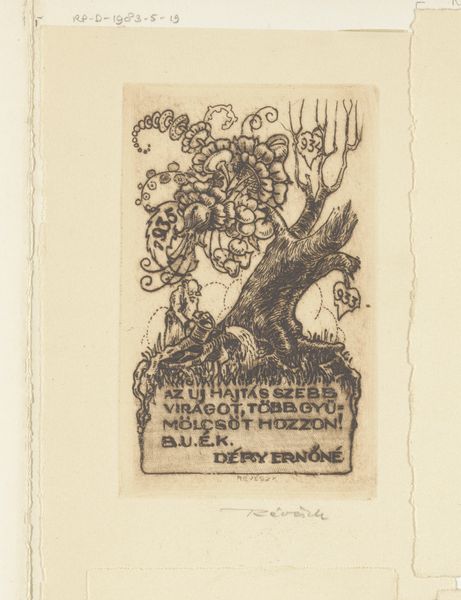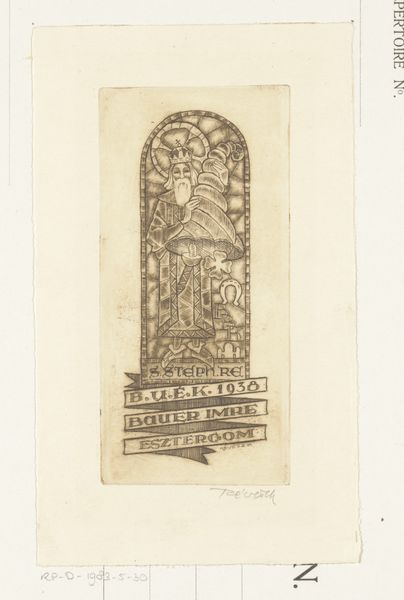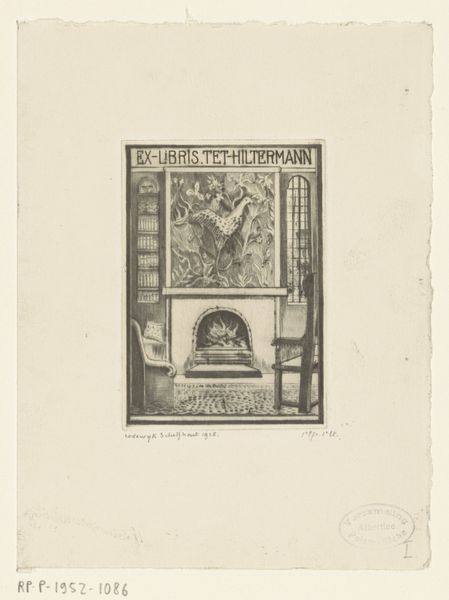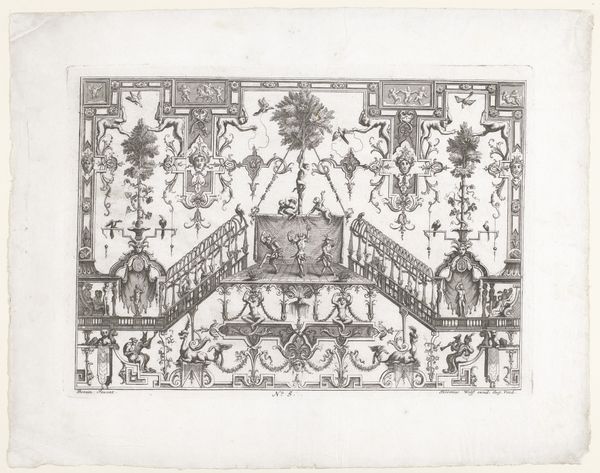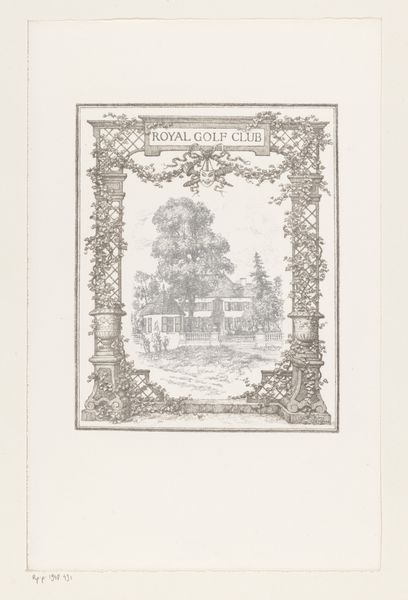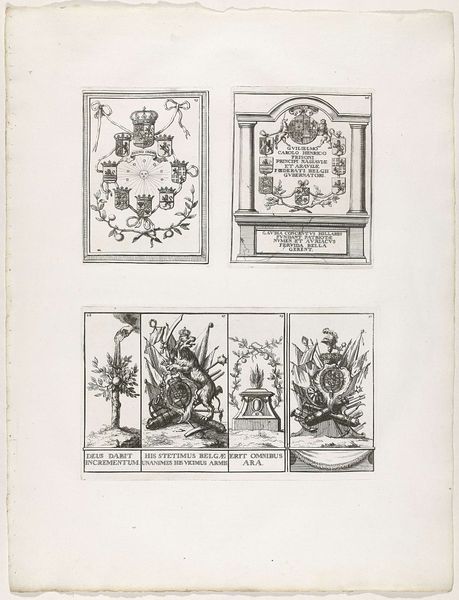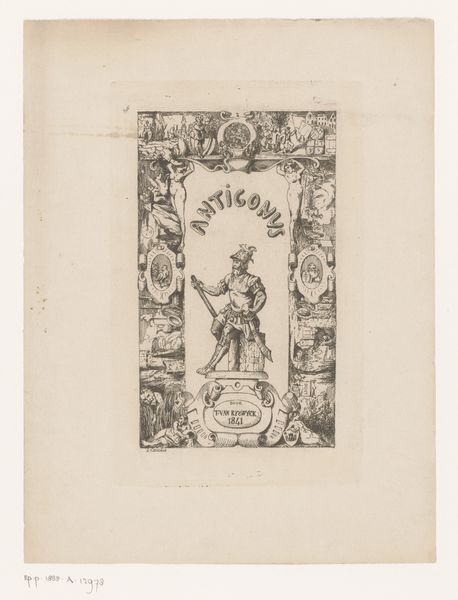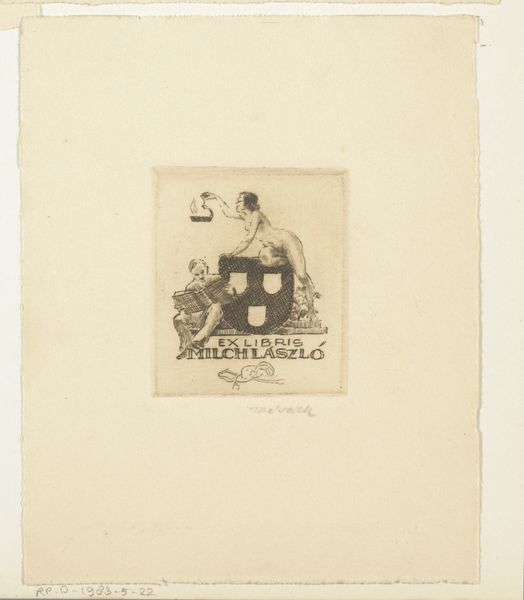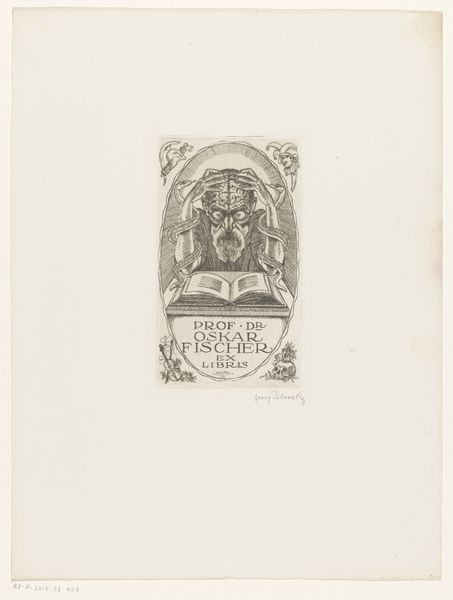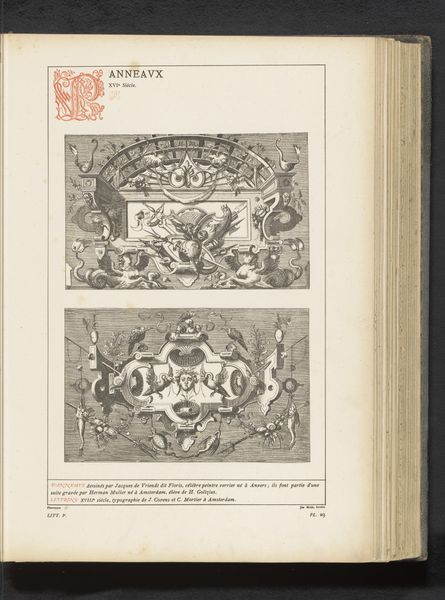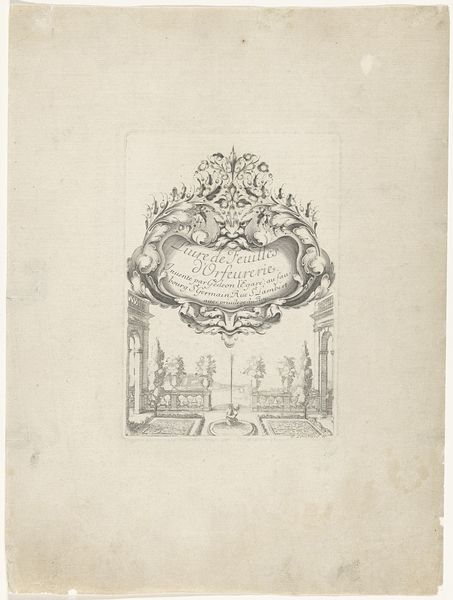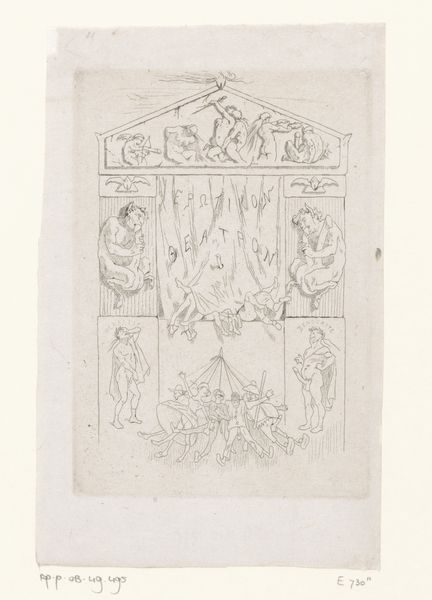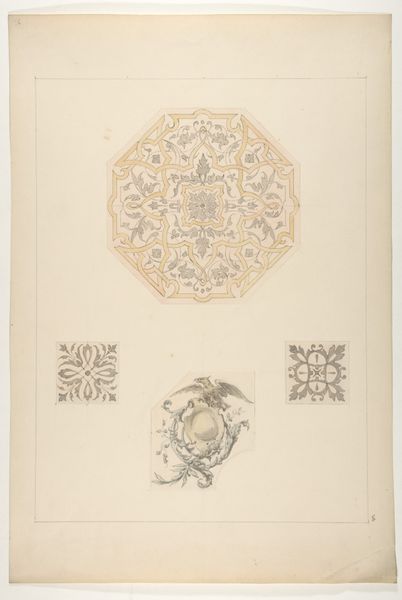
graphic-art, print, woodcut
#
portrait
#
art-deco
#
graphic-art
# print
#
woodcut
Dimensions: height 100 mm, width 68 mm
Copyright: Rijks Museum: Open Domain
Curator: Lodewijk Schelfhout created this woodcut in 1926, titled "Ex libris van Herman Carel Hintzen," a bookplate now held at the Rijksmuseum. The work certainly embraces that Art Deco spirit. What stands out to you initially? Editor: There's a certain compressed intensity, a black and white dance held within those tight rectangular borders. The crispness of the lines juxtaposed against those billowing cloud-like shapes...it makes me think of contained energy. Curator: It's quite characteristic of an Ex Libris. Those symbolic elements are densely layered. The "Ex Libris" text itself, bookends this emblem above and then below there's the owner's name, "M.H. Hintzen." What do you think of the central crest motif and urban elements combined in a design of ownership and identity? Editor: Absolutely. Visually, I'm drawn to the botanical form in the center that sprouts roots arching over the buildings with a strange, organic authority. The bridge and buildings almost seem to flow like water. Curator: I would say that it offers a curious blending. The flowering plant evokes growth, learning, and the natural world, anchoring itself even amidst urbanity. It’s juxtaposed with the skyline, suggesting Hintzen's association with a specific location. Note how even the swirls at the very top contribute to that continuity, a feeling of progression. Editor: The architectural rendition almost suggests an idealized city; yet its small scale here presents a sense of personal connection— almost claiming territory. It adds such weight of context in so small of a form, not quite abstracted but definitely flattened. I wonder what that place might mean? Curator: Indeed. Whether it represents the owner’s actual surroundings or aspirations, we can only speculate. It makes us pause and consider what ‘home’ or ‘identity’ represented to Hintzen and what books and their images might have held during this moment in time. Editor: Considering the limited tonal range and strong linear structure, the image holds its complexities quite remarkably. It’s both representational and powerfully symbolic in a very refined visual language.
Comments
No comments
Be the first to comment and join the conversation on the ultimate creative platform.
